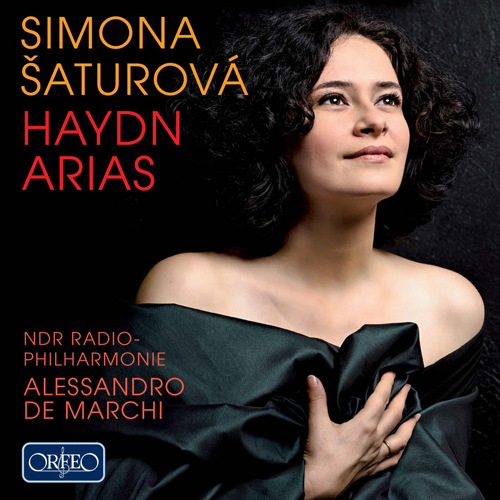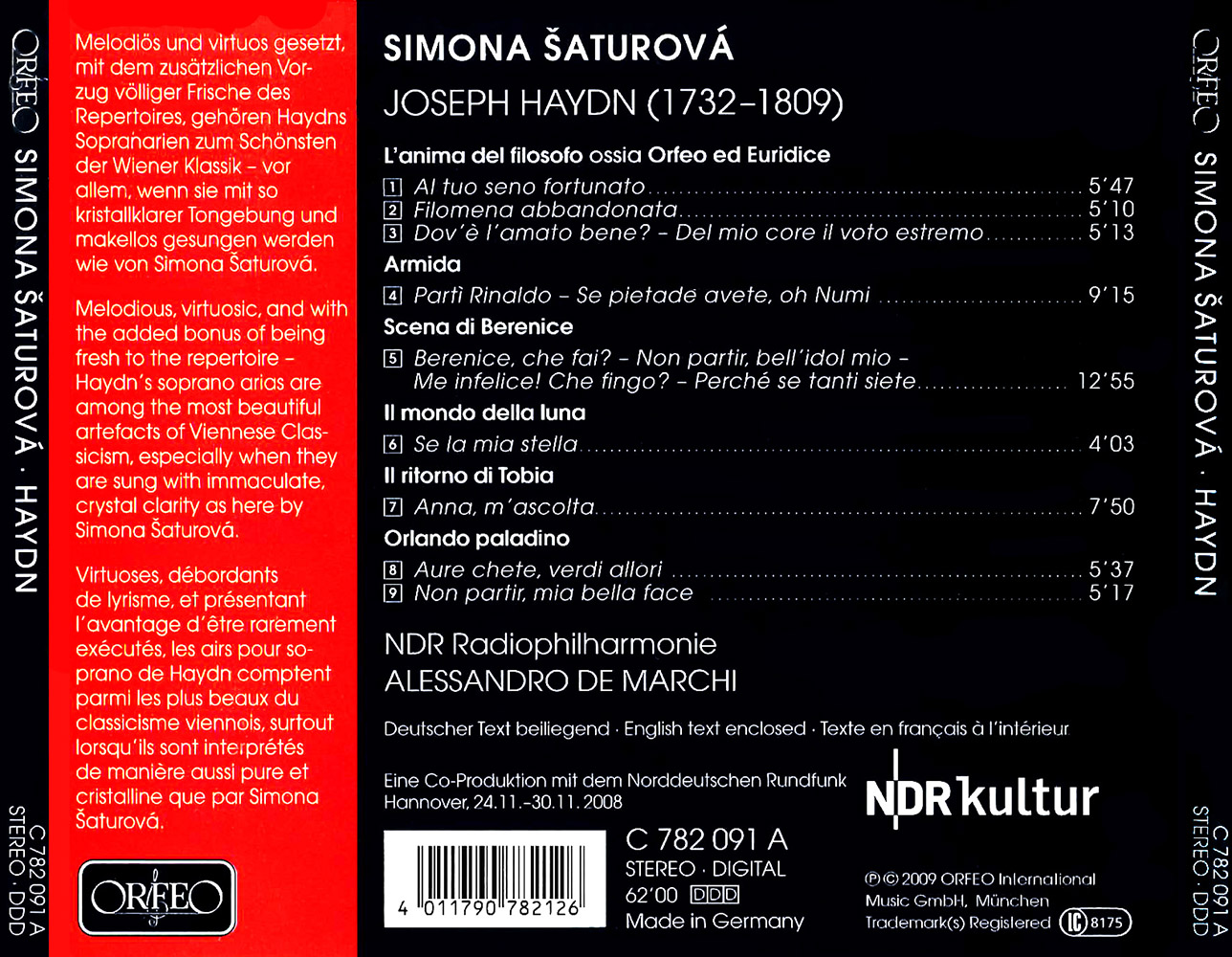Haydn: Arias
Simona Saturová, with her crystal clear, supremely flexible soprano voice, has already long established herself in the world’s concert halls, working with conductors such as Christoph Eschenbach, Sir Neville Marriner, Jirí Belohlávek and Manfred Honeck. But she has also already enjoyed success on the international operatic stage, beginning in Prague and moving on to Paris, Buenos Aires, Frankfurt and elsewhere. If someone can sing both lyrical and coloratura roles like her, offering vocal warmth and virtuosity in equal measure, then she must be all but predestined to sing to perfection the vocal works of Joseph Haydn, the Viennese classic whose anniversary we commemorate this year. The soprano parts of Haydn’s operas and oratorios are proof enough of the quality of these works, though with the exception of the Creation and the Seasons, they still tend to be regarded askance today. But this is unjustified, as we can easily confirm upon perusing the arias of L’anima del filosofo or Orfeo ed Euridice. These open our CD with Simona Saturová and the NDR Hanover Radio Philharmonic under the baton of Alessandro De Marchi, himself a specialist in the music of the 17th and 18th centuries. Simona Saturová sets alight a veritable firework of coloratura in the aria of the Genius from L’anima, while in those of Euridice, she reveals lyrical simplicity and intensity of expression. An aria from Armida, perhaps Haydn’s best-known opera, offers a synthesis of these performance possibilities. This opera was a highpoint of Haydn’s three decades working as capellmeister at Esterházy Castle. The same flexibility is demanded by the Scena di Berenice, a large-scale dramatic monologue for concert performance that Haydn wrote in London, and whose text was taken from the libretto for Antigono by Pietro Metastasio (a suitable comparison would perhaps be with Beethoven’s soprano aria ‘Ah perfido’). For the ‘world on the moon’ – Il mondo della luna, one of Haydn’s early, cheerful operas for the Esterházy princes – Simona Saturová achieves a light, hovering, charming tone. As in the oratorio Il ritorno di Tobia and the ‘dramma giocoso’ Orlando Paladino, it is the formal structures that strike one here on account of their proximity to Mozart. In both their vocal line and orchestral accompaniment (sung and played with complete command and beauty of tone), Haydn displays no less aplomb. What more could one wish for in a Haydn year?

















